Thanks for joining us today. I’m stoked about today’s post. In my ongoing discussion on constructing a book series, I asked a group of writers, who are in the process of, have written, a book series, to provide some insight into their process and books.
My panel includes V.S. Nelson, Camelia Miron Skiba, Shanyn Hosier, Mary Buckham, and Gina Conkle. I’m very excited to have this incredibly talented panel of authors bringing varied knowledge and experiences, some traditionally published and some self-published, writing different genres that include romance (including a LGBT ménage romance!), paranormal romance, urban fantasy, and historical. Next to their pictures below, I included a brief description of their book series. At the end of the post, please find a brief bio on each along with a picture of their latest release or cover to one of their series!
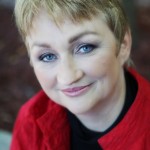 Mary Buckham: I’m writing two series. One in fiction, one in non-fiction. The fiction one is an Urban Fantasy series focused on a group of five human women with unique gifts recruited to fight growing agitation from the preternatural world that exists side-by-side with the human world, though unknown to most. They do this via a new agency called the INVISIBLE RECRUITS, which echoes the theme of women in the shadows, fighting their own fears and limitations as well as battling threats unknown to most humans. The initial books in the series focus on Alex Noziak, part/witch, part/shaman, who must learn to embrace her gifts to help her team and others or die in the process. The non-fiction series is called WRITING ACTIVE SETTINGS, which explores different elements of utilizing setting on the page as a dynamic, powerful craft tool in several distinct ways.
Mary Buckham: I’m writing two series. One in fiction, one in non-fiction. The fiction one is an Urban Fantasy series focused on a group of five human women with unique gifts recruited to fight growing agitation from the preternatural world that exists side-by-side with the human world, though unknown to most. They do this via a new agency called the INVISIBLE RECRUITS, which echoes the theme of women in the shadows, fighting their own fears and limitations as well as battling threats unknown to most humans. The initial books in the series focus on Alex Noziak, part/witch, part/shaman, who must learn to embrace her gifts to help her team and others or die in the process. The non-fiction series is called WRITING ACTIVE SETTINGS, which explores different elements of utilizing setting on the page as a dynamic, powerful craft tool in several distinct ways.
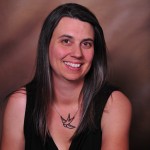 Shanyn Hosier: Desert Menage is comprised of three books. It follows three characters—Beth, Paul, and John—and their triadic relationship from its comically tenuous beginning in Nine Dates, through its evolution into a strong and equitable bond in Tri Me, culminating with the threesome facing unique and politically charged challenges in Wholly Trinity as they strive to live more openly and begin a family together. Amanda Ryder (series) never asked for her special gifts—she’d been born with the ability to see, hear, and sense things around her no one else could. But her family never believed her innocence and accused her of witchcraft. Her father threw her out of the house on her eighteenth birthday, when an exorcism went horribly wrong. The series follows Amanda as she makes her way in the world, meeting others with paranormal talents, struggling to find her place. It’s not always easy, especially when “good” guys don’t always make “good” choices.
Shanyn Hosier: Desert Menage is comprised of three books. It follows three characters—Beth, Paul, and John—and their triadic relationship from its comically tenuous beginning in Nine Dates, through its evolution into a strong and equitable bond in Tri Me, culminating with the threesome facing unique and politically charged challenges in Wholly Trinity as they strive to live more openly and begin a family together. Amanda Ryder (series) never asked for her special gifts—she’d been born with the ability to see, hear, and sense things around her no one else could. But her family never believed her innocence and accused her of witchcraft. Her father threw her out of the house on her eighteenth birthday, when an exorcism went horribly wrong. The series follows Amanda as she makes her way in the world, meeting others with paranormal talents, struggling to find her place. It’s not always easy, especially when “good” guys don’t always make “good” choices.
 V. S. Nelson: Long ago, seven stepped forward and volunteered for a mission to protect Earth from an evil that escaped their world. Today they are known as those that run Guardians Inc., a world renowned protection agency. Although the books in the series are multi-plotted, each book centers on one of these heroes and their quest for true love.
V. S. Nelson: Long ago, seven stepped forward and volunteered for a mission to protect Earth from an evil that escaped their world. Today they are known as those that run Guardians Inc., a world renowned protection agency. Although the books in the series are multi-plotted, each book centers on one of these heroes and their quest for true love.
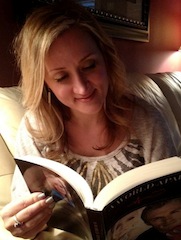 Camelia Miron Skiba: My series is a 5-story historical romance series called Dacian Legends (Born In Vengeance and Born In Sin already released; Born In Darkness will come out 2015). Each book follows the story of one of the members of a Dacian brotherhood in their quest for revenge, honor and love.
Camelia Miron Skiba: My series is a 5-story historical romance series called Dacian Legends (Born In Vengeance and Born In Sin already released; Born In Darkness will come out 2015). Each book follows the story of one of the members of a Dacian brotherhood in their quest for revenge, honor and love.
 Gina Conkle: Midnight Meetings, a 3 book series with Sourcebooks, tells of men and women entwined with the once golden Sanford family. The Industrial Revolution looms ahead and each character must adapt. A pivotal “midnight meeting” changes lives in each book.
Gina Conkle: Midnight Meetings, a 3 book series with Sourcebooks, tells of men and women entwined with the once golden Sanford family. The Industrial Revolution looms ahead and each character must adapt. A pivotal “midnight meeting” changes lives in each book.
All the series sound great and some I’ve had the pleasure of starting to read! I’d like to observe something here, which I find very interesting. The book titles are connected in some way (all very creative and intriguing), and we definitely see this with many book series.
We have V.S. Nelson’s two published books in her Sekhmet’s Guardians: Eternal Lovers and Eternal Nights. The eternal already clues you in to the immortal aspect.
Cami’s Born In Vengeance, Born in Sin, etc…touching upon each hero’s conflict/story.
Shanyn’s Nine Dates, Tri Me, and Wholly Trinity which all play into the ménage theme.
Mary’s Invisible Recruits, Invisible Magic, Invisible Power. Automatically I wonder, why invisible? Mary explains the invisible relates to internal and external conflicts.
Gina’s Midnight Meetings, which I find a fantastic idea., and the series title immediately clues you in.
My Necromancer Series: Necromancer’s Seduction, Necromancer’s Betrayal, and tentative third title of Necromancer’s Redemption. Each title reflects a specific theme for the heroine’s arc (and other characters as well).
If you visit these authors’ websites and look at the book covers, you see a design theme as well. All this helps the reader connect immediately to the series, and also shows the author put a lot of thought into the look of their series, etc.
One of the challenging aspects for me in writing my series has been filling the reader in on what happened in the previous book. I’ve seen authors do this in various ways, and I think the method used depends on the type of book series. How have you approached filling the reader in?
Shanyn: I consider it a need-to-know basis thing. I try to keep a list of the key facts a reader must know (or be reminded of) in order to make sense of a plot point or relationship dynamic, and I try to weave them in only when the new plot demands it. I try to avoid mentioning much “history” in the first chapter, instead making the situation compelling enough to draw the reader in further.
Gina: Treat each book as a standalone story. Make a list of the important facts, big items that must be in every story, and weave them into various appropriate scenes, usually conversation. A big info dump drags the story down. Give a little here and there, like bread crumbs, to your reader. I keep timelines with big historical and character events.
Mary: With each new book in the INVISIBLE RECRUIT series I treat what happened in the previous stories as back story, especially in the opening chapters. A line or two here and there, focused on only what a new reader needs to know NOW, right here, to understand the motivation or conflict of the current story. No large info dumps. No saying the same thing in the exact same way that it’s been said in a previous book. No waiting to start the current story at the expense of catching the new reader up on the series. Readers will engage in the back story elements only if they commit to the current story, which means if there’s a strong story element from a previous book that really must be known it’s revealed deeper into the new book. It can also help to reveal what’s happened before via dialogue (an argument between two characters regarding a course of action in the current story based on what’s happened in the past; internal dialogue revealing just enough of past books to explain current motivation, etc), or by introducing a new character that might need to be caught up on previous events. Each book or novella or short story must stand on its own though. There’s nothing so frustrating for a reader, new or returning, than to get bogged down in back story.
V.S.: I try to instigate important events from the past in dialog. It’s a great way to slip something in without distracting the reader from the actual plot. Example, “Hey Joe, remember last month when….”
Cami: I started the second book in the same place where the first one ended (the battlefield),with the same heroes but switched the point of view (in Born In Vengeance Ilias is the main character. During the events of Born In Sin, the second book, it’s Zyraxes’ turn to be in the spotlight). Throughout the second book I sprinkled in reminders of events that happened in the previous book. Born In Darkness—unlike the second book—will start a few months later, with Galtys now taking the front stage. Personally, I think having the same characters throughout the entire series, fillers come from whatever common ground/goal they have. Something brought them together in the first place and will keep them that way or will separate them, depending where your story goes.
Your answers have already helped me! I think switching point of view with a series can be extremely interesting because you can provide a different perspective on a past event, which also provides a fun and alternate way of dropping in backstory. And I think we can all agree to avoid information dump where possible.
Other challenges to writing a series?
Gina: Mostly, lack of time. To do a series well is to embrace layers of conflict. That means really digging into personalities in depth. It’s not enough to focus on hero and heroine, but then have surface interaction with other characters. Think about the hero’s personality type conflicting with the best friend, the trusted servant, his mother, etc. We get so focused on hero and heroine conflict that we forget how layers of conflict with other characters enrich a story and make an engaging read.
Let me break in here because Gina’s point touches upon an important aspect of my series. I have a large cast of characters, and with each book, I explore how the heroine’s relationship progress with each major character: the conflict, interests, etc. Challenging but fun.
Cami: Since the story is set in ancient Dacia 2,000 years ago (Romania of today), I have to do a lot of research. It’s very time consuming. When I wrote the first book, Ilias was the only hero that spoke to me. It wasn’t my goal to write a series. Eventually Zyraxes became “vocal” and wanted his story be told as well. As a woman writing from a male’s perspective, sounding like one is challenging. The stories are told from the hero’s point of view and NOT the heroine.
V.S.: As I began the series I also started character sheets on each individual in the series knowing eventually I would be writing An Insiders Guide to the Series. It has helped me keep important facts straight for each character (even minor ones who might some day take center stage.)
Mary: Not enough time in the day <grin>. Writing a series involves knowing the details of what has happened in previous stories and making sure those details don’t trip you up. As readers we notice when a character is aged mid-twenties in one book and then four books later they are described as mid-thirties when we know only a few months passed between story events. So creating and maintaining an accurate bible for the series is invaluable. Keeping an eye out for the overall story lines is important to, whether it’s a few months or a few years, you as the author must assume something has happened to your characters while they have been off scene. Time is not static and plays a large part in the believability of the series. I remember the thriller writer Robert Crais speaking to this topic once. His primary two story protagonists were Vietnam veterans. When he started the series their ages and experience were very believable, but as the series lengthened, and one book a year would be released the characters started aging. Crais wished he’d spaced the story series tighter, month-to-month instead of year-to-year because within a decade he no longer had forty something ex-vets but fifty-something and the sixty-something, which changed the dynamics of the series. Something to think about.
Shanyn: It’s always difficult to keep track of the little details. As series progress, there’s so much world-building, so many “rules” our characters have to follow to stay true. Not to mention a slew of minor characters whose names and dates and details you’ve got to keep track of! Thank heaven for sticky notes and spreadsheets. It’s also easy to get intimidated by the success of earlier installments of the series. What if readers hate the final ending? I know what feels right to me, to my characters, but the rest of the world might not agree—just ask JK Rowling and Stephenie Meyer.
I have to add my challenge here, and it seems to echo some of what you all have mentioned. The mythology of my world morphed quite a bit from Book Two to Book Three. Granted, I should have plotted a lot of the mythology out from the beginning, but even so, it still would have changed. So I just completed the first draft of Book Two, and as I begin writing Book Three, find myself going back and making changes to Book Two. I think I have the mythology written down now…in pencil…sigh 🙂
In my posts about writing a series, I discussed overall story arcs, and character arcs. Does your series have any arcs that you can discuss without giving too much away?
V.S.: Unlike traditional romance, my paranormal series is multi-plotted so there are several story and character arcs throughout each book.
Gina: Having a chuckle as I write this…I must like women who perceive themselves as flawed. In Norse Fire, my heroine sees herself as flawed from circumstances from birth and seeks the safe route. Of course she’s tossed headlong into all kinds of unsafe (physical and emotional) situations. Similarly, in Book 2 of Midnight Meetings, the heroine lived a wonderful life until difficult circumstances came her way in recent years. In her case, two men will open her eyes to the truth about herself.
Cami: Absolutely. That’s what makes a good story excellent and keeps your readers buying the next book in the series. Leaving a few loose ends and developing secondary characters so well that they become main heroes is a sure algorithm for continuing the series successfully. I love train wrecking the lives of my heroes and see how they end up coming out of whatever I throw at them: stronger, better, wiser. I’m more drawn to stories where the characters develop rather than by stories per se.
Shanyn: Since the books in Desert Ménage retain the same lead characters, it’s kind of obvious that the relationship isn’t going to crash and burn in the first book <wink>. But this complex relationship does face obstacles and continues to evolve. I enjoy playing with the different characters’ personalities—what was a character weakness in one book or stage of the relationship might become a strength in the next one. I’m also challenged (and encouraged) by the rapidly changing political and cultural status of LGBT rights. Much of the plot for Wholly Trinity (the third book) was conceived and written before the recent landmark Supreme Court decision striking down DOMA, for instance.
Amanda does a lot of growing through the series, partly due to the fact she’s so young in the first book. Her paranormal powers are still developing, and she’s not sure what she can or can’t do—only that she wants to use her talents for good and prove her father was wrong about her. Many of the characters are recurring, and Amanda’s conflict with the primary villain persists through all the books. There is a romantic arc, too, which takes a while to develop. Puberty is punishing enough, but Amanda’s paranormal libido is tied to the lunar cycle, wreaking havoc on her relationships, not to mention her nerves! But Amanda will end up with a special someone at the end of the 6-book series, I promise.
Mary: In the first five books of my series I focus on one of five main characters, Alex Noziak, revealing a hint here and there of the other characters to intentionally intrigue readers into wanting to know more about them. Building this interest to the point that the readers MUST HAVE a full length book on X or Y. In the initial five books the protagonist, Alex, must change and grow, but incrementally, not in huge leaps. I’m also going to allow her to digress, which creates conflict for her and the others on the team, but is part of human nature. Conflict creates drama and drives fiction, so an easy, or too quick positive character growth, creates no story questions that will compel the reader to pick up and read the next book in the series. Each book must have a complete story arc but the very attainment of the external goal sought by the protagonist must be fraught with unexpected consequences. An example is in INVISIBLE MAGIC, the protagonist’s external story goal is to find and stop someone behind a series of thefts, and murders. When Alex accomplishes this it creates bigger problems that then set up Alex’s next book, INVISIBLE POWER.
Me again. Yes! Mary. My main characters flounder quite a bit in Book Two, and while difficult to write, also quite enjoyable. They end up in these crazy situations at the end of Book Two which they must dig themselves out of in Book Three.
What book series have you enjoyed reading and why?
Mary: I love series because if written well I can dive back into a world I love and a cast of characters I know something about while having a chance to learn something new. In mystery series I love Dana Stabenow’s Kate Shugak series set in Alaska and Margaret Maron’s set in North Carolina. In Urban Fantasy I’ve loved Patricia Brigg’s Mercy Thompson series and the Ilona Andrew’s Kate Daniels series. In Suspense Dianna Love’s Slye Temp series is a winner as is either the Joe Pike or Elvia Cole series by Robert Crais.
Cami: My all time favorite is Nora Roberts’ Chesapeake Bay Saga. Each of the four books follows the story of one brother. In each book you get a glimpse at another brother and it’s intriguing enough that you want to find out more about him as well. Aside from Nora’s experienced voice, their heartbreaks and struggles and the way they overcome them is what appealed to me.
Shanyn: I tend to seek out long series or really thick books, because I never want the story to end! I love the imagination of Harry Potter—so much so that I wrote two fan fiction novels. I love the escapism of Anne McCaffrey’s Pern books. I adore the snarky humor of Jasper Fforde’s Thursday Next series. I love almost everything Edward Rutherfurd has written (historical mega-sagas a la James Michener). Recently, I’m really digging Hugh Howey’s Wool series. For more ideas/suggestions, please friend me on Goodreads and check out my bookshelf!
V.S.: Black Dagger Brotherhood – J.R. Ward (Dark Paranormal romance); Troubleshooter Series – Suzanne Brockmann (Military romance)
Gina: A favorite is Josie Litton’s Viking trilogy from the 1990s. I’ve read those books over and over again. The characters make cameos in each other’s stories, but I love Vikings. I love how she painted those stories, just lyrical writing and great characters.
Any other tips to offer other writers in writing a series?
Mary: Once a reader invests in a series, discovering and taking the risk on the first book (regardless if it’s the first in the series or not) it’s easier for them to gobble up the next book in the series. As the author we must keep them in mind as well as the new reader, which can be a fine juggling act. I recommend finding Beta readers for your books from these two types of readers-those who know the back stories from previous books and those who are brand new to the series. Ask them about when the book they are currently reading drags for them, or when they need more info to understand what’s going on. That can help keep each book in the series meeting different reader needs. Create your story bible early and break it out into sections such as secondary characters, locations, time frame of the story. You’ll want that info at some point without re-reading all of your own work. Keep a notebook (electronic or paper) to jot ideas about future story ideas while you’re working on the current story. That will keep you focused on the story in front of you and create a wealth of material to mine when you need it.
V.S.: It takes a lot of time to create a paranormal or urban fantasy world. Sadly, it can be very distracting once you are involved in a series to find the author has changed the rules of the game half way through the series. Make sure you stay true to the world you have created.
Shanyn: Go for it! All the difficulties are well worth the organizational effort required. When you love a set of characters, a world you’ve built or an era that speaks to you, why leave it?
Cami: Edit. Edit. Edit. When you think you’re done editing, edit again. Then hire a professional editor. It’s worth every penny. Overnight stardom doesn’t happen. Grow a thick skin. It’s not about whether you will get a bad review or not. It’s about when. Be prepared for that very moment and remember you won’t ever be able to please everyone (not even God can, so don’t expect that from yourself, a mere mortal). Set goals and expect the best from yourself. Publishing—traditional or self—is not for the faint of heart. Seth Godin predicted in an online interview that there were 15,000,000 books published in 2012. Which means it’s harder and harder to gain a fan base if you are a newbie. Be persistent, practical and patient. Be professional in anything you do and post online. Once it’s out there it can come back and haunt you.
Gina: For me, doing advance research on times and places (world building) makes a huge difference. Then, delve into your characters, but be fluid. People change, and they’ll let you know what new direction you need to take once the story starts.
I’m going to have to echo Gina here because if I would have really thought things through from the beginning, I’d be less frustrated now. That being said, it’s also okay to let things flow and morph, let the characters take you on the ride.
This has been a blast.
Please join the discussion. Leave a comment with your own experiences, thoughts, tips, or ask a question of our panel. The authors will be visiting periodically, and we’ll keep comments open for a couple of days. I know Gina is conducting a Red Hot Reads Book Club to talk Norse Jewel, Vikings, Viking culture on Facebook today :).
Thank you ladies for joining me today, taking the time to answer questions!!!
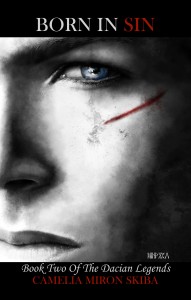 Camelia Miron Skiba—official bio
Camelia Miron Skiba—official bio
~~Who I am is not important but what I leave behind is~~ © 2013 Camelia Miron Skiba
I’m a dreamer
I’m a sinner
I love my books
I conjure hooks
And heroes with good looks
Romance is my guilty pleasure
Taking me to places with new decor
Come join me if you dare
I promise not to bore
If you like to read my stories
Pray my husband continues snorin’
For he’s the one who keeps me up at night
When I give my heroes wings and flight.
www.authorcameliamironskiba.com
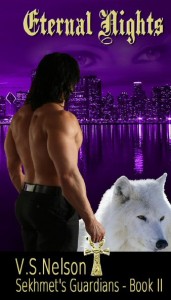 After spending sixteen years living on the Navajo reservation in New Mexico, and another twelve battling the heat while teaching in the Middle East, Virginia S. Nelson, moved to Mesa, Arizona where she resides with the love of her life and her four pound Miniature Pincher, Anubis. She joined three chapters of RWA sometime after she completed Eternal Lovers, convinced by others she should seek publication for a story which was originally written to make the voices in her head shut up. Guess what, it didn’t work.
After spending sixteen years living on the Navajo reservation in New Mexico, and another twelve battling the heat while teaching in the Middle East, Virginia S. Nelson, moved to Mesa, Arizona where she resides with the love of her life and her four pound Miniature Pincher, Anubis. She joined three chapters of RWA sometime after she completed Eternal Lovers, convinced by others she should seek publication for a story which was originally written to make the voices in her head shut up. Guess what, it didn’t work.
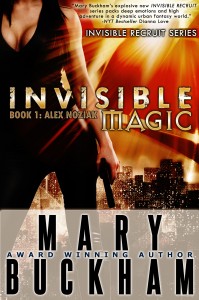 Mary Buckham was born into a family of artists so as a natural story teller didn’t realize she was creative until an adult. After working in the financial and media industries, as well as raising five children, Mary turned to writing and now loves creating thrills, spills and spells as she follows the ups and downs of fascinating characters starting with Alex Noziak, the heroine of INVISIBLE MAGIC, INVISIBLE FATE and INVISIBLE POWER.
Mary Buckham was born into a family of artists so as a natural story teller didn’t realize she was creative until an adult. After working in the financial and media industries, as well as raising five children, Mary turned to writing and now loves creating thrills, spills and spells as she follows the ups and downs of fascinating characters starting with Alex Noziak, the heroine of INVISIBLE MAGIC, INVISIBLE FATE and INVISIBLE POWER.
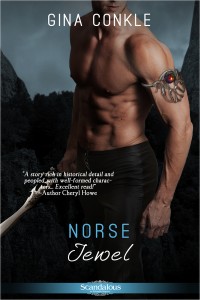 Gina’s a lover of history, books and romance, which makes the perfect recipe for historical romance writer. Her passion for castles and old places (the older and moldier the better!) means interesting family vacations. Good thing her husband and two sons share similar passions, except for romance…that’s where she gets the eye roll. When not visiting fascinating places, she can be found in southern California delving into the latest adventures of organic gardening and serving as chief taxi driver.
Gina’s a lover of history, books and romance, which makes the perfect recipe for historical romance writer. Her passion for castles and old places (the older and moldier the better!) means interesting family vacations. Good thing her husband and two sons share similar passions, except for romance…that’s where she gets the eye roll. When not visiting fascinating places, she can be found in southern California delving into the latest adventures of organic gardening and serving as chief taxi driver.
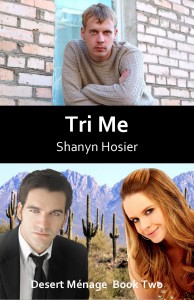 Born and raised in small-town, rural Indiana, I (Shanyn) now live in metropolitan Phoenix, Arizona with an intimidatingly smart and devastatingly handsome husband and two hyperactively cute and talented sons who will one day be Earth’s Overlords (never underestimate the power of Legos). I enjoy cooking, traveling, gardening, sewing, quilting, and embroidery but only when in the right mood and seldom concurrently (I’m kind of streaky when it comes to hobbies). I adore reading and writing in the same way that I love breathing and eating, gaining a similar nourishment from each. www.shanynhosier.com
Born and raised in small-town, rural Indiana, I (Shanyn) now live in metropolitan Phoenix, Arizona with an intimidatingly smart and devastatingly handsome husband and two hyperactively cute and talented sons who will one day be Earth’s Overlords (never underestimate the power of Legos). I enjoy cooking, traveling, gardening, sewing, quilting, and embroidery but only when in the right mood and seldom concurrently (I’m kind of streaky when it comes to hobbies). I adore reading and writing in the same way that I love breathing and eating, gaining a similar nourishment from each. www.shanynhosier.com

Wonderful insights and a great cast of authors, Mimi, thanks for inviting me to this panel! Love, love, love the perspectives!
Cheers ~ Mary B 🙂
As always, it’s great to have you here. And you always provide very helpful, insightful comments.
This is a great article! Thanks so much for posting this!
Thanks for stopping by Brenna!
What??? It’s over already? Sigh. I really enjoyed everyone’s answer. Think about what brings us writers together and how similar or not our answers are. I can talk books and writing all day long. Great panel. Awesome questions. Interesting answers.
Thanks much, Mimi!
It was great having you. Your series sounds so interesting. I look forward to checking it out.
Hi Mimi-
What a clever idea to have this post and get various author commentaries. Love it! I enjoyed this a lot. More blogs ought to do this kind thing. I’m guessing this was a lot of work, but “high-five” for this. Well done and informative. I must tweet this again to people!
Take care and thanks for letting me be part of this.
Gina
Thanks to all of you for participating. It was fun so worth the effort 🙂